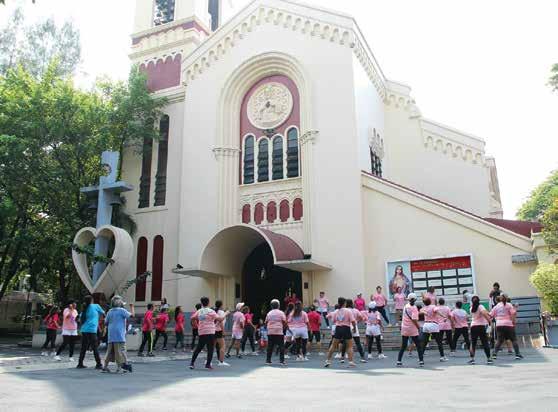
3 minute read
California schools start hatching heat...
degree burn in seconds. California already has millions of dollars of grant funding available for greening schoolyards and increasing tree canopy, such as the Urban and Community Forestry grants through Cal Fire that set a goal to shade at least 30% of school campuses.
To help schools make the best use of funding for extra trees, Turner and her graduate student Morgan Rogers are modeling how increasing the tree canopy to 30% can affect heat stress. They will compare different tree configurations, like dispersed or clustered, and hope to issue recommendations this fall.
Advertisement
Legislators in Sacramento are also looking at amending state building codes to make it easier for schools to install shade structures. Currently, the rules require that an additional 20% of the budget be spent on any new construction or renovation to make an accessible path to the completed project. The bill would add an exception for free-standing shade structures. Schools would still be required to meet accessibility requirements, but installing a shade structure wouldn’t trigger additional construction.
“That’s what we are asking, not to be exempted from those requirements, but to not put the burden on the shade structure,” said Mark Hovatter, chief facilities executive of the Los Angeles Unified School District.
Menjivar said she was excited to see the new UCLA research. Her bill would require the state Department of Education to develop a template for schools to follow in creating their own heat plans, which would have to be completed by 2025 for implementation in 2027.
The bill recently passed the state Senate and is now being considered in the Assembly.
Schools outside California are also reckoning with the heat. Researchers at Arizona State University partnered with public health experts and school leaders last spring to develop guidelines for “HeatReady Schools.” The 30 recommendations span topics like school policy (e.g., access to a health professional), the environment (shade coverage on at least half the playground), and training (workshops on identifying heat illness).
The program is working with 35 schools and community centers in Phoenix, with plans to expand to all of Maricopa County by 2026.
Preparing for the warming climate is front of mind for Principal Brad Rumble at Esperanza Elementary School in Los Angeles. The school’s heat-resilience efforts started with filling empty tree wells in front of the campus in 2014. Now, the school boasts a shaded courtyard and a native plant garden, and, courtesy of a grant from the district, more trees are on the way.
“We work together to make sure that our students’ needs are addressed on hot days,” Rumble said. “And, certainly, as more shade becomes available on this campus, we will be able to address those needs even better.”
This article was produced by KFF Health News, which publishes California Healthline, an editorially independent service of the California Health Care Foundation. KFF Health News is a national newsroom that produces indepth journalism about health issues and is one of the core operating programs at KFF—an independent source of health policy research, polling, and journalism.
Filipino nurses ‘best’ in the world but decent pay, work elusive in PH
by KURT DELA PEÑA Inquirer.net
MANILA — The Philippines has almost a million registered nurses and according to Health Secretary Teodoro Herbosa, they are “the best in the world.”
But many of the “best” already left the Philippines to work overseas for reasons that everyone is already aware of— low pay and excessive work.
The Professional Regulation Commission said there are 951,105 registered nurses, but not all are practicing their profession, with only 509,297 considered as “active.”
Likewise, citing Department of Health (DOH) data, the group Filipino Nurses United (FNU) said 316,415 have already migrated.
As previously narrated by nurses who were interviewed by INQUIRER.net, other countries give what the Philippines cannot, pointing out that opportunities overseas “serve as a rainbow end with a golden pot.”
“We can earn a lot more there than working here,” one of them said.
Migrant Workers Secretary

Susan Ople said there is a “huge” demand for Filipino nurses overseas, especially in Austria, Canada, Germany, Japan, Saudi Arabia, Singapore, and the United States.
Why? It is because they are “the best in the world,” Herbosa said.
But what is in a Filipino nurse that makes him or her the best and in demand overseas?
‘One of a kind’
Jocelyn Andamo, FNU secretary general, told INQUIRER.net via Viber that Filipino nurses have characteristics “only us have,” pointing out that they are “well known as excellent.”
“Filipino nurses are competent and very caring at the same time,” she said. “We are proficient in English, too.”
According to the Educational Testing Service, a U.S.based private and non-profit educational testing and assessment organization, “the more proficient you are [in English], the better you can express yourself.”
It explained that as the official language in 53 countries and spoken as a first language by









